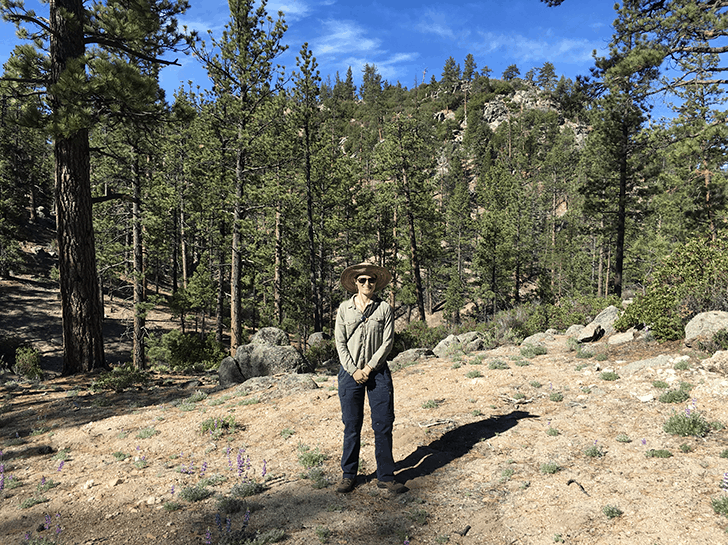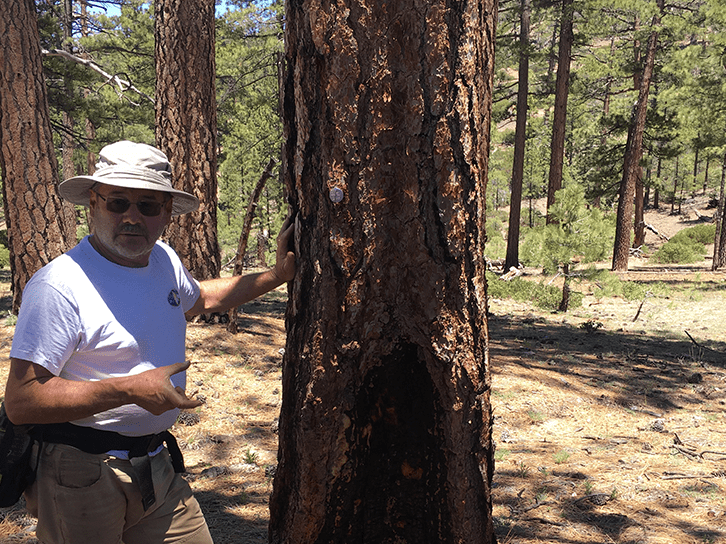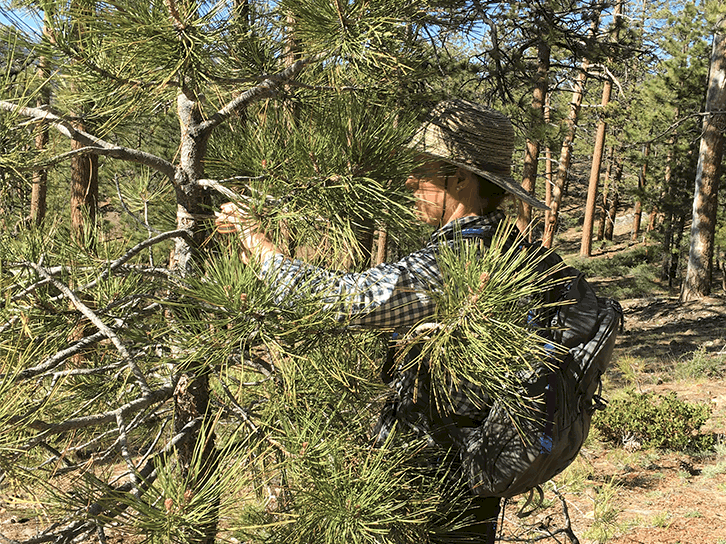California Wildfires: Lessons from Field Work in Baja California, Mexico
July 17, 2019 | CCST Newsroom, CCST Science Fellows | Contact: Teresa Feo, CCST Program Associate
The 2017 and 2018 wildfire seasons in California were the most destructive on record raising a number of complex policy issues across a wide range of topics. I recently had the opportunity to learn about one of these major areas—forest management practices—firsthand by spending a week in Baja California, Mexico with UC Berkeley's Dr. Scott Stephens and his research team.
At CCST—whose core mission is to provide California decisionmakers with impartial advice from leading experts on policy issues related to science and technology—we have been convening a series of CCST Expert Briefings on wildfires to engage the capitol community with experts in the field. Having served as a CCST Science Fellow in the Senate Office of Research in 2018, I was excited to join CCST to continue to build connections between scientists and decisionmakers. I helped coordinate an effort lead by CCST Council Members Susan Hubbard (LBNL), Rob Oglesby (retired CEC), Zee Duron (Harvey Mudd College), and Bryan Hannegan (NREL) to ensure science relevant to wildfire policies was available and accessible to decisionmakers. We immediately began identifying topics of interest based on conversations with decisionmakers, conducting background research on the issues, reviewing the academic literature, and interviewing experts.
 Photo: Teresa Feo, PhD, in Baja California, Mexico.
Photo: Teresa Feo, PhD, in Baja California, Mexico.While preparing for CCST's most recent expert briefing, "Evidence-based forest management strategies for improved wildfire resilience," I interviewed Dr. Scott Stephens, professor and head of the Fire Science Lab at our partner institution UC Berkeley about the current health of California's forests. There is strong scientific consensus that historic forest management policies, including suppression of natural fires, in California have unintentionally impacted forest health and has made them less resilient to wildfires. Dr. Stephens has spent the past 20 years studying the relatively pristine forests of the Sierra de San Pedro Mártir National Park in Baja California, Mexico, to gain insight on how to improve the conditions of California's forests.
"The San Pedro Martir is the most resilient forest that I have ever seen," Dr. Stephens told me. "We continue to work there to learn more about it and have used information from this area to inform California forest management."
 Photo: Scott Stephens, PhD, UC Berkeley
Photo: Scott Stephens, PhD, UC BerkeleyAs a former field biologist myself who has spent years tromping through the forests of California to research birds, it came as quite a personal shock to learn that our forests have been so severely impacted. Dr. Stephens argued that the best way to understand wildfire-resilient forests is to see one first hand. "I have taken at least a hundred different people down to Baja since 1998," he said. "They all came back with so much more idea of what a resilient forest is."
Dr. Stephens kindly extended an invitation to join in on his next research trip, and that is how I found myself spending a week in Baja California, working as part of a field crew, camping at 8,000 feet, and hours from the nearest cell tower. As promised, a week in field was a productive learning opportunity. Working side by side with many of California's forestry experts, I learned more about the issues impacting our forests and their research to help discover solutions. I even picked up a few new skills including how to measure surface fuel loads, precisely read a compass, and measure the diameter of a tree.
However, the most transformative experience was the simple opportunity to see the forest with my own eyes. While preparing for the expert briefings, I read over and over that the structure of California's forests are unnatural, choked with too many trees that have sprouted since the implementation of fire suppression policies and early logging practices, leaving them vulnerable to disturbance. The reports made it clear that there are pressing issues in need of solutions. But by spending a week walking a relatively pristine forest myself, I was able to gain a clear understanding of the profound benefits and beauty that could be achieved by improving the health of California's forests.
 Photo: Teresa Feo, PhD, measuring tree diameter.
Photo: Teresa Feo, PhD, measuring tree diameter.Thanks to this unique opportunity, I have gained greater insight into the science underlying the policy issues related to our forests. I look forward to applying this newfound knowledge to help fulfill CCST's core mission of delivering expert advice to our state's decisionmakers.
Groups.io Links:
You receive all messages sent to this group.
View/Reply Online (#31966) | Reply To Group | Reply To Sender | Mute This Topic | New Topic
Your Subscription | Contact Group Owner | Unsubscribe [volcanomadness1@gmail.com]

No comments:
Post a Comment